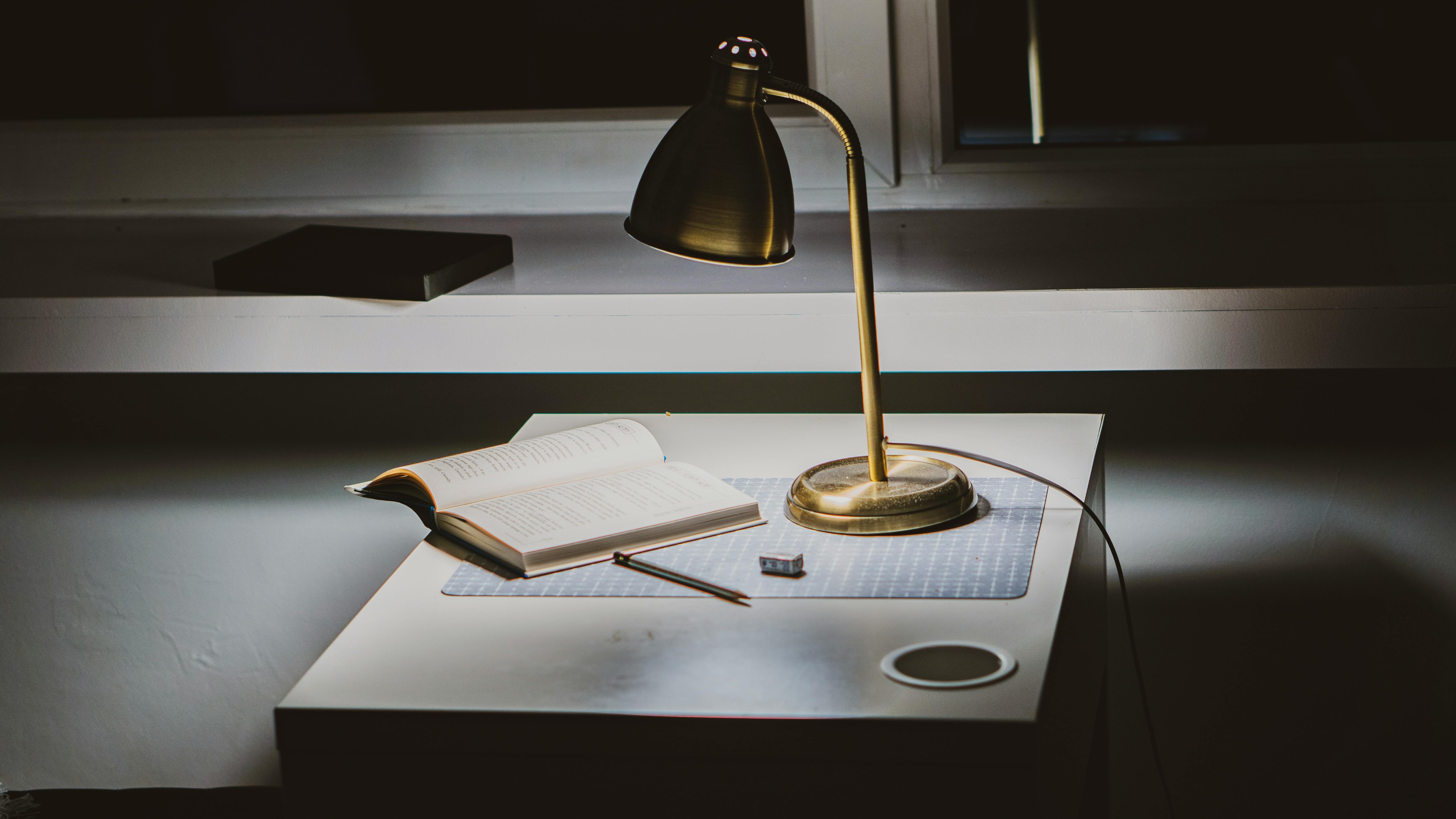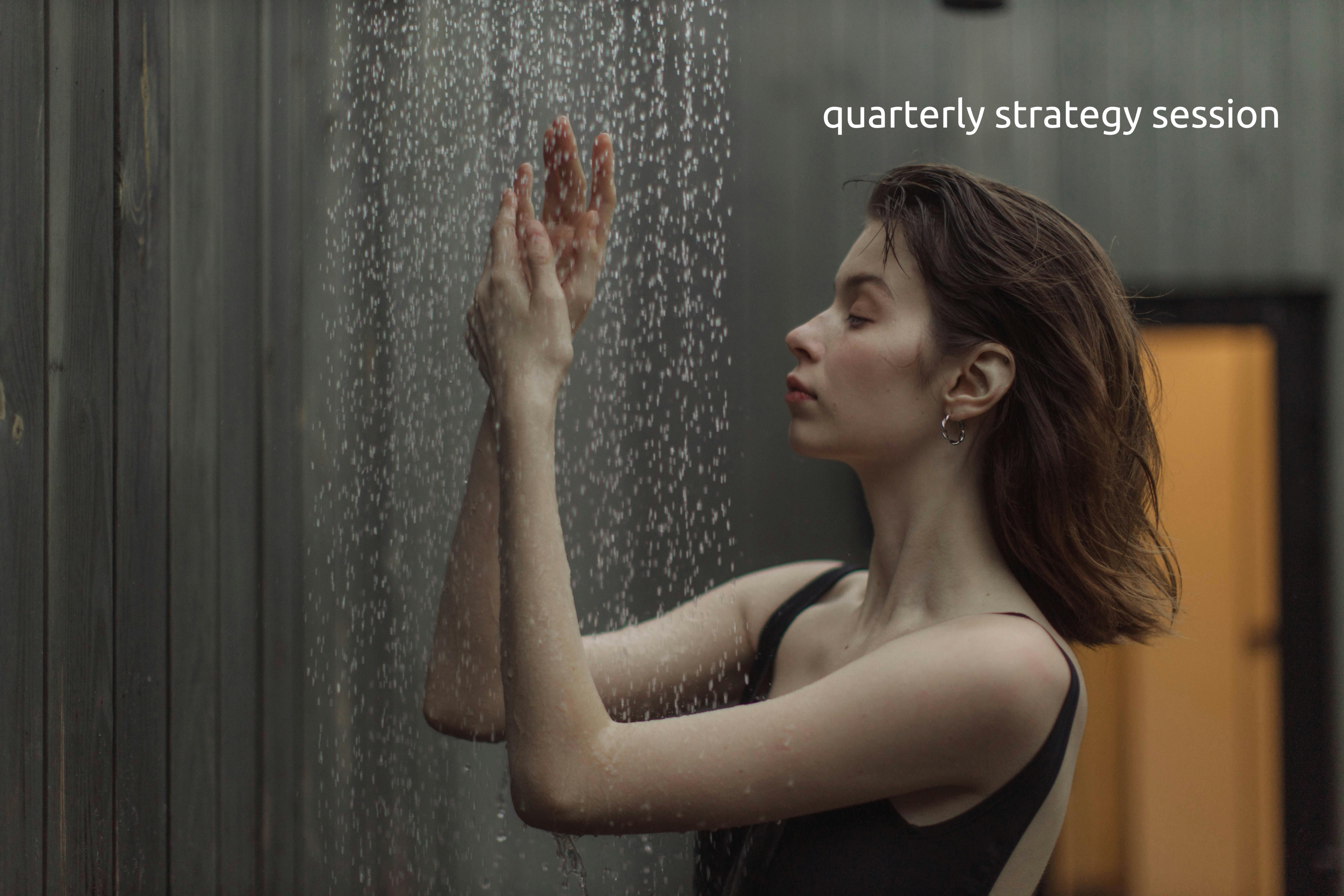Let’s talk strategies to trick your brain into working more effectively!
I’ve got ten psychology tips for increasing productivity in your office space, then ten MORE productivity tips to improve other aspects of your workflow.
10 psychological work space productivity tips for remote workers.
In most cases, remote work increases productivity. Here are some strategies to increase it even more so you can get more done quicker, easier, with more time to spend on yourself.

1. Context scent
You’ve probably heard of using olfactory memory triggers for studying and test-taking. The same strategy can work for plugging you into work mode.
Using a specific aromatherapy scent only when working (or when working on a particular task/project), will eventually cause your brain to associate that smell with “focus mode”. When you need to concentrate, that scent can become a powerful trigger for your work mindset.
Brains are complicated, but also pretty easy to train.
2. Monk’s desk
This one’s my favorite–install a “monk’s desk”. Remove everything except what you need for the current task. Every object in your visual field pulls a tiny bit of attention, so removing them increases your brain’s capacity for focus.
When you finish that task, clear everything again and only bring out the tools required for the next task.
You might have a designated workspace free of distractions for a particular task. I often need to snap on the horse blinders and buckle myself into my desk chair to get my writing done.
A great tool if you’re writing or drafting is Cold Turkey Writer. It locks you out of your entire computer, essentially turning it into a typewriter, until you’ve hit your word goal.

3. Productive lighting switch
Lighting can make a huge difference on focus. To utilize productive lighting, set up three distinct configurations: Bright, white light for analytical work, warm light for creative tasks, and a dim light for routine tasks. Switching between them is just another way to signal different work modes to your brain.
If you have the fancy LEDs, using dramatically different colors for different tasks can really put you in the zone.

4. Cathedral effect
The Cathedral effect is an interesting one! All you do is position your desk to face a high ceiling, or maybe a window with a view of tall trees. Or outside underneath the tall trees, if you’re feeling cute.
Research shows that higher spaces promote abstract thinking, while lower ceilings enhance detail-oriented focus.
Adaptability in your work space can help you to better align the configuration and atmosphere to match your desired productive outcome.

5. Focus tunnels
Focus tunnels can be great for remote workers and office workers alike. To create a focus tunnel, position plants, screens, or other objects to create a tunnel-like effect around your workspace. This naturally directs your attention forward, reduces peripheral distractions, and makes your coworkers think, “Oh, Jen’s being a freak again, leave her alone until she emerges.”
Note: Be sure to take regular breaks to avoid eyestrain. You might set a quiet timer for every 20 minutes or so to lift your head and focus on an object in the distance for a few seconds.
Another note: With all of these strange work space orientations, please keep ergonomics in mind. Don’t injure yourself!
6. Productivity throne
This one isn’t for me, but I’ve heard success stories from others. A productivity throne is basically a less comfortable chair.
The focus chair separates you from your relaxation seating. Your body will associate mild discomfort and an “alert” posture with getting things done, preventing you from getting too cozy.
Personally, I reach max productivity when I reach max coziness, but trying this helped me figure that out.
7. Design task zones
Designating different areas for different types of work is another way to train your mind to dip into the mode you’d like it to be in.
Maybe creative work happens standing at a counter, while analytical work is done sitting at your desk. Moving between zones like that helps you to context-switch more effectively and access deep work mode for that particular task.
8. Productivity runway
This is a goofier one, and again, office workers can try this out, too. Quietly, in their mind…
A productivity runway is just a short walking path to your desk. You can use this path as a pre-work ritual, mentally preparing yourself as you approach your workspace.
You might tweak the environment, like turning certain lights on or off, or you can do this whole ritual in your mind, using the walk to your desk as a grounding exercise.
Similarly, you might use a commute to work or the elevator ride to get yourself in the fighting spirit to tackle the day’s work.

9. Time or task anchors
Here’s another strategy for leading your brain toward your desired “mode”. Place distinctive objects in your workspace that you’ll only see during specific time blocks or during certain tasks.
Maybe a specific mug for your morning tasks, or a lamp you switch on in the afternoon to engage in deep work.
Or, idk, an Email Response cardigan you slip on. Get creative, get freaky.
10. Reset ritual space
I go on and on and on about the productive importance of taking adequate breaks. A ritualistic reset space goes along well with that idea.
Designate a specific spot for short breaks throughout your day where you can physically turn away from your work.
This might be a corner with a water bottle to hydrate while you intently look at a plant. It might be your walk to refill your coffee, an outside stroll, or a smoke break. It might be in the office bathroom, staring at your own reflection and asking, “Why?”
Anyway, this physical separation acts as a mental reset between tasks, clearing your plate to take on a whole different meal when you return to your desk.

10 more productivity tips to trick your brain.
Here are ten more of my favorite tips to increase your productivity via playing little pranks on your brain.
1. Temptation bundling
Pair something you need to do with something you WANT to do.
For example, I have podcasts or audiobooks that I’ll only listen to when performing a certain task, like going on a walk or decluttering my kitchen cabinets.
Your brain will eventually crave the boring task to get the reward. Just like training a dog. You’re just a dog, but you control the snacks. So control your snacks in a way that makes you more productive.

2. Implementation intentions
Apply implementation intentions. Instead of saying, “I’ll work on that project,” say, “When I finish my coffee at 9am, I’ll spend exactly 30 minutes on that project outline.”
The specificity of when-then formatting bypasses the decision-making that often leads to procrastination and lolly-gagging.
3. Zeigarnik effect
The Zeigarnik effect is the tendency to remember unfinished tasks better than completed tasks. So, start tasks, but leave them strategically unfinished. Your brain hates incomplete tasks and will feel a natural urge to close that loop.
Use this by starting projects in small ways to create mental tension that pulls you back.
One of my #1 writing productivity tips is to stop while you still have ideas. Take a few notes on where you think that story/piece is going next, then in your next writing session, you’ll know exactly where to dig in instead of wasting time trying to figure it out.
4. Productive pause
Taking strategic breaks allows your brain to continue processing the project or problem in the background, often solving problems for you subconsciously. You can then return to the task with fresh insights.
Ideally, you can do some sort of mindless menial task during this pause, like a walk, or a shower. You know how people say they have their best ideas in the shower? It’s a moment of silence where you’re working on something mindless and routine, giving your subconscious a second to cook.
Let him cook!

5. Task framing
With anything in life, how you feel about something is directly affected by how you think of it.
We instinctually insist upon proving ourselves right, so if we say and think the things we would like to be true, we will work toward proving it.
Task reframing is the act of rewriting overwhelming tasks in terms of your identity to it. Instead of saying, “I have to write this report” with an eye roll, you can think, “I’m a skilled professional delivering excellent analysis.”
This shifts your mindset from obligation to identity-aligned action. You’re not being forced to do something–you ARE someone skilled and doing a great job.
6. Present-self tax
If you find yourself procrastinating, imagine your future self as a separate person, whomst you love. Would you deliberately burden that little sweetie by procrastinating right now?
Maybe not! Hopefully!
If you said, “I don’t care about my future self,” ring ring ring, make a therapy appointment. 📞
If you’re in good standing with yourself, you probably don’t want to burden future you! This mindset shift can reduce the psychological distance between now and later, giving a real consequence for putting off your work.

7. Productive procrastination
You can leverage productive procrastination by being strategic and working with your avoidant brain.
When avoiding one task, you can have another useful task to turn to. Your brain’s resistance to one task can fuel progress in another area, keeping overall momentum.
In my experience, this is more effective with two different types of tasks. Like if I have a writing project and also want to create a capsule wardrobe, those are very different modes and I’m probably in the mood for one over the other, allowing for productive procrastination.
8. Complexity reframing
Complexity reframing is a fantastic strategy when you have a task or project that just seems impossibly large or complex.
Break the tasks down until they feel ridiculously easy. Instead of putting “write report” in your to do list, you can start with “open document and write one sentence”.
It’s a lot harder to justify procrastinating or avoiding the task when it takes 14 seconds. Your brain has less resistance to tiny steps, so make ’em tiny and gain momentum.
9. Focus filters
To eliminate decision fatigue and task hesitation, you can develop personal rules for task times. Like, only work on creative tasks before noon, or only check emails at 11am and 4pm.
This helps your brain conserve energy by removing some of those micro decisions throughout the day.
10. Prioritize dopamine balance
For remote employees and office employees alike (and, like, unemployed people and everyone else in the world), dopamine balance is essential for getting things done and feeling satisfied and happy with your life while keeping your mental health in check.
A quick overview–dopamine is a chemical in your brain that majorly controls happiness and motivation. It’s kept in little pockets, and your brain releases it, either slowly or quickly, depending on what you’re doing.
Unhealthy dopamine spikes happen when you give yourself an unnatural amount of stimulation. Like smoking weed or scrolling TikTok or shotgunning four Swiss rolls. You feel extremely happy temporarily, but the overall effect is negative.

Why’s that?
Well, you’re using up all of your dopamine reserves! Once it’s depleted, it has to build back up.
So the better way to strategize your day is to start with low dopamine activities. Don’t touch your phone for at least fifteen minutes (but preferably closer to an hour) after you wake up. Have a calm morning routine. Get your work out of the way before playing.
Dopamine reserves build back up during times of slowness and quiet. So you can prioritize building up dopamine reserves by journaling, meditating, reading, sitting in nature, talking to a friend, going for a walk, working out, cleaning your house, or just letting yourself have some moments of boredom and reflection.
This allows your brain to give you appropriate dosages of dopamine throughout the day to keep your mood level and allow natural motivation triggers to function properly, making you overall more productive.
Increasing meaningful productivity from the core.
With a vague goal of “be more productive” without a clear idea of what that even means for you, you’ll just spin your wheels and watch mud fly in every which direction.
So let’s get intentional in pursuing what we truly find meaningful, THEN we can strategize improving our productivity.
Start with this free guide to help you determine how you want your year to go.
What IS a yearly theme? Well, I’m so glad you’ve asked. Please take a look at our comprehensive guide to yearly themes to learn everything you need to know!
Good tips, fun delivery. The cathedral effect is big for me. I’ll likely refer back to these quite a bit. Thanks.